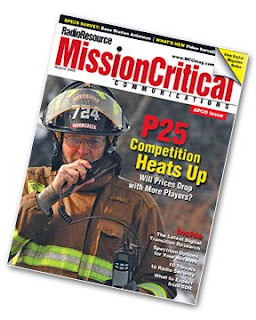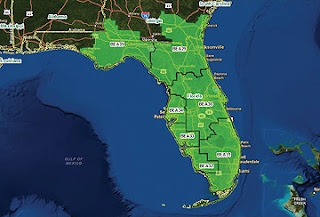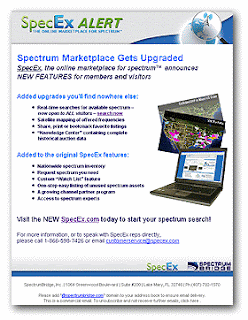 In the spring of 2009, Spectrum Bridge announced a financial index measuring the total secondary market worth of licensed frequencies. The publicly available metric was the first of its kind and allowed viewers to track up to three years of trends. The SpecEx Spectrum Index continues to be the standard indicator of current and historical value of spectrum.
In the spring of 2009, Spectrum Bridge announced a financial index measuring the total secondary market worth of licensed frequencies. The publicly available metric was the first of its kind and allowed viewers to track up to three years of trends. The SpecEx Spectrum Index continues to be the standard indicator of current and historical value of spectrum. However, while it is useful to monitor the ups and downs of the market as a whole, the Index cannot determine the current value of your specific holdings; and therein lays the real value of spectrum as perceived by the holder – how much YOUR licenses are worth and how they relate to competitor’s spectrum assets.
For the most current, personalized license valuations, Spectrum Bridge developed the “SmartWaves” spectrum management and planning tool.
 SmartWaves is the leading online solution for managing, viewing and analyzing the value and capabilities of your spectrum licenses. The tool delivers detailed $/MHz-Pop figures, license maps and market demographics to produce the most up to date market value of individual spectrum licenses.
SmartWaves is the leading online solution for managing, viewing and analyzing the value and capabilities of your spectrum licenses. The tool delivers detailed $/MHz-Pop figures, license maps and market demographics to produce the most up to date market value of individual spectrum licenses. To find how a spectrum portfolio compares to the competition, SmartWaves also features a competitive analysis feature which values other company’s licensed spectrum, as well as your own.
For easy to understand financial and demographic data to make informed decisions regarding spectrum, valuations through SmartWaves offer comprehensive, yet concise reports generated online in a matter of minutes.
To find the real value of your licenses, contact Spectrum Bridge @ 1-866-598-7426 x510, email SmartWaves@SpectrumBridge.com or visit SmartWaves.com to learn more.
Complete valuations of spectrum are also available for those who require a comprehensive study of licenses - contact Spectrum Bridge for more information.










 To learn more about the status of this NERC program,
To learn more about the status of this NERC program, 

















